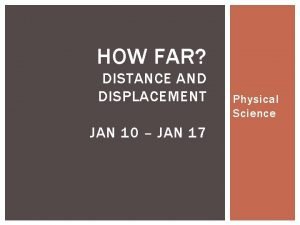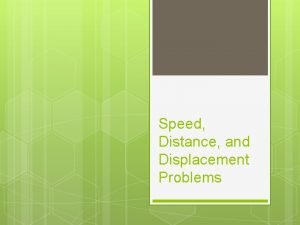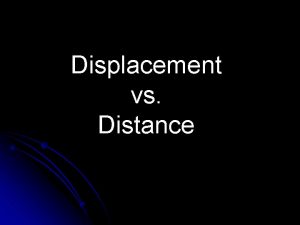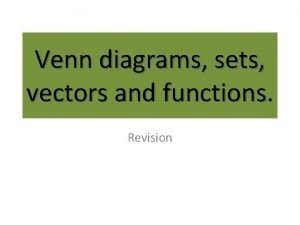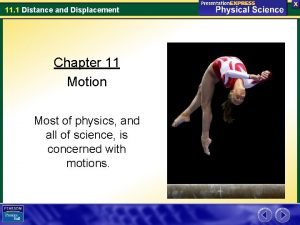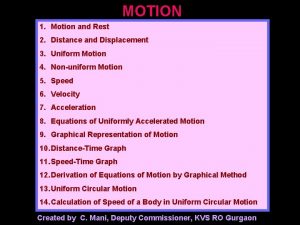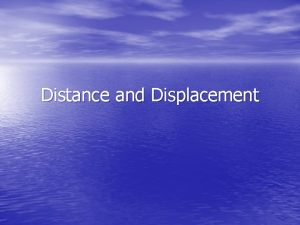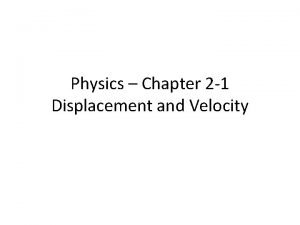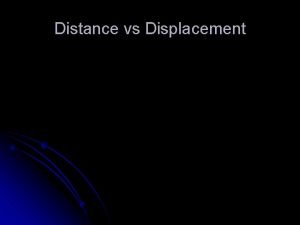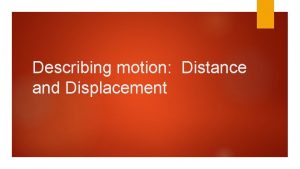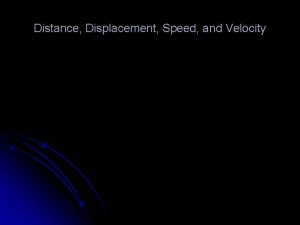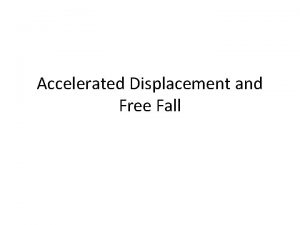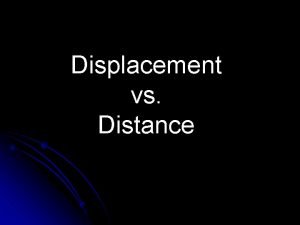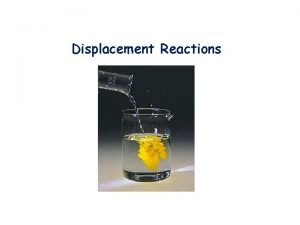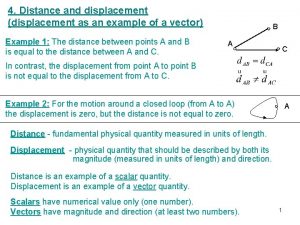Distance and Displacement Physical Science Unit 2 Frame










- Slides: 10

Distance and Displacement Physical Science Unit 2

Frame of Reference • To describe motion accurately and completely, a frame of reference is necessary • frame of reference is a system of objects that are not moving with respect to one another. • Ex. A butterfly flying up and down in front of a person • Relative motion is movement in relation to a frame of reference. • Ex. A car driving by someone standing on the side of the road

Measuring Distance • Distance is the length of a path between two points. (only numerical) • Distance from Madison to Flowood (not a straight line) • The SI unit for measure distance is meter (m) • For larger measurements of distance the kilometer (km) is used.

Measuring Displacement • To describe an object’s position relative to a given point, you need to know how far away and in what direction the object is from that point. • Displacement is the direction from the starting point and the length of a straight line from the starting point to ending point (straight line distance). • Numerical value and a direction

Vectors • Displacement is an example of a vector • Vectors are quantities that have magnitude and direction. • The magnitude can be size, length, or amount • Vector addition is the combining of vector magnitudes and directions

Displacement Along a Straight Line • When two displacements represented by two vectors, have the same direction, you can add their magnitudes.

Continued…. . • When two displacements are in opposite directions, the magnitudes subtract from each other

Displacement Not Along a Straight Path

Questions 1. What is a frame of reference? How is it used to measure motion? 2. How are distance and displacement similar and different? 3. How are displacements combined? 4. A girl who is watching a plane fly tells her friend that the plane isn’t moving at all. Describe a frame of reference in which the girl’s description would be true. 5. Is displacement more like the length of a rope that is pulled tight or the length of a coiled rope? Explain

Questions 6. Would you measure the height of a building in meters? Explain your reasoning. 7. Should your directions to a friend for traveling from one city to another include displacements or distances? Explain 8. The resultant vector of two particular displacement vectors does not equal the sum of the magnitudes of the individual vectors. Describe the directions of the two vectors
 A delivery truck travels 18 blocks north
A delivery truck travels 18 blocks north What is displacement in physical science
What is displacement in physical science Single displacement vs double displacement
Single displacement vs double displacement Distance and displacement problems
Distance and displacement problems Distance and displacement
Distance and displacement Scalar and vector venn diagram
Scalar and vector venn diagram 11.1 distance and displacement
11.1 distance and displacement Distance and displacement
Distance and displacement Distance and displacement examples
Distance and displacement examples Two students walk in the same direction
Two students walk in the same direction Distance vs. displacement
Distance vs. displacement
